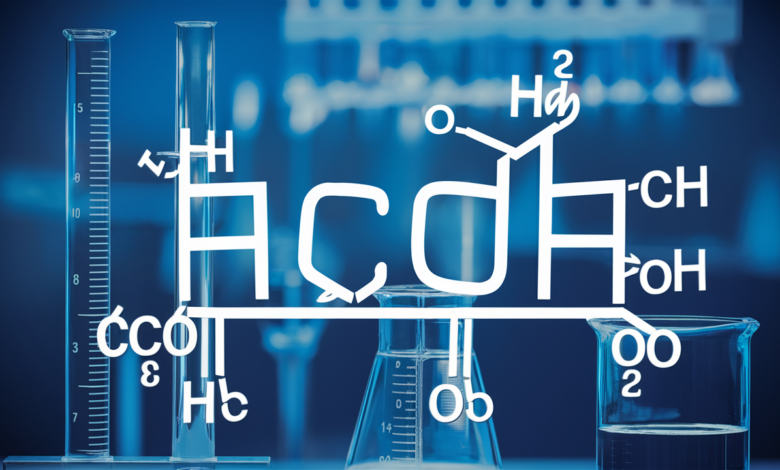HCOOCH CH₂ H₂O – Understanding the Chemical Equation, Reactions, and Applications

Chemistry is filled with fascinating reactions that reveal the behavior of molecules when combined under specific conditions. One such example involves the combination of HCOOCH CH₂ H₂O, a formula that represents interactions between formate (HCOOCH), methylene (CH₂), and water (H₂O). Understanding how these compounds react is essential for grasping the basics of organic chemistry, reaction mechanisms, and molecular structure transformations.
This article explores the chemical composition, reaction pathways, synthesis possibilities, and industrial relevance of HCOOCH, CH₂, and H₂O. By the end, you’ll have a detailed understanding of the role of these compounds in organic chemistry and their potential applications in energy, biochemistry, and environmental science.
Understanding the Chemical Components: HCOOCH, CH₂, and H₂O
To fully comprehend the reaction, it’s important to first understand the structure and properties of each compound involved.
1. HCOOCH – The Formate Ester
HCOOCH refers to a formate ester, a derivative of formic acid (HCOOH) where the hydrogen atom is replaced by an organic group. These esters are often used in organic synthesis, fragrance industries, and biochemical reactions due to their reactivity and mild acidity. The formate group (HCOO–) is also key in biological oxidation and fuel cell technology, where it serves as a hydrogen donor.
2. CH₂ – The Methylene Group
The CH₂ (methylene) group is one of the most essential functional units in organic chemistry. It acts as a linking group in hydrocarbons and participates in multiple addition and substitution reactions. The methylene radical is highly reactive and often used in polymerization and organic synthesis to build longer carbon chains.
3. H₂O – Water as a Universal Solvent and Reactant
Water (H₂O) is not only a universal solvent but also an active participant in countless chemical reactions. It plays a vital role in hydrolysis, oxidation-reduction reactions, and hydration processes. When combined with organic compounds like HCOOCH and CH₂, it often triggers chemical transformations such as hydrolysis or condensation reactions.
Possible Chemical Reaction Between HCOOCH, CH₂, and H₂O
When HCOOCH, CH₂, and H₂O interact, the type of reaction that occurs depends on the reaction conditions, including temperature, catalysts, and the phase (liquid, gas, or solid). One of the most likely processes involves hydrolysis or addition reactions, where water breaks down or modifies the ester (HCOOCH) in the presence of methylene groups.
A simplified reaction might be represented as:
HCOOCH + H₂O → HCOOH + CH₃OH
Here, water hydrolyzes the formate ester to yield formic acid (HCOOH) and methanol (CH₃OH). If CH₂ is present as a reactive radical or intermediate, it can contribute to further chain elongation or the formation of new organic compounds. This is a typical scenario in organic synthesis or polymerization processes, where methylene units expand molecular structures.
Exploring the Reaction Mechanism
Step 1: Hydrolysis of HCOOCH
When HCOOCH reacts with H₂O, it undergoes hydrolysis, a reaction where water breaks chemical bonds in the ester. The ester bond is cleaved, producing formic acid and an alcohol (usually methanol).
Reaction:
HCOOCH + H₂O → HCOOH + CH₃OH
This reaction is commonly catalyzed by acidic or basic conditions, accelerating the breakdown of the ester bond.
Step 2: Role of CH₂
The CH₂ group (in radical form) can participate in subsequent addition or substitution reactions. In the presence of the formate and alcohol products, methylene groups can create new carbon bonds, forming complex hydrocarbons or oxygenated compounds. This step represents a foundational concept in organic synthesis, especially in the formation of polymers and resins.
Step 3: Stabilization and Product Formation
The final products depend on the environment — in aqueous solutions, stable compounds like formic acid, methanol, and longer-chain hydrocarbons may result. Under thermal or catalytic conditions, these reactions can produce a variety of organic intermediates valuable in industrial chemistry.
Industrial and Practical Applications
The combination of HCOOCH, CH₂, and H₂O isn’t just a theoretical exercise — it has real-world significance in multiple chemical industries.
1. Organic Synthesis
Ester hydrolysis and methylene reactions are fundamental in organic synthesis. They are used to manufacture alcohols, acids, aldehydes, and esters, all of which serve as building blocks for pharmaceuticals, polymers, and fragrances.
2. Fuel and Energy Research
Formates like HCOOCH are studied as potential hydrogen carriers in fuel cell technology. Their reactions with water release hydrogen, which can be utilized in clean energy applications. Similarly, methylene derivatives contribute to synthetic fuel production.
3. Biochemical Relevance
In biological systems, formate and methylene groups play critical roles in metabolic pathways. The formate cycle in cellular respiration involves oxidation reactions similar to the hydrolysis of formate esters, linking this chemistry directly to life processes.
4. Polymer Chemistry
The reactivity of CH₂ groups is essential in polymerization. Through addition reactions, they help form long-chain molecules such as polyethylene and formaldehyde-based resins. These materials are used extensively in packaging, construction, and consumer goods.
Environmental Significance of the Reaction
Reactions involving HCOOCH, CH₂, and H₂O are also important in environmental chemistry. Hydrolysis processes are used to break down organic pollutants into simpler, biodegradable compounds. Furthermore, studying how methylene radicals interact with water and organic esters helps scientists understand atmospheric chemistry and carbon cycle dynamics.
Laboratory Study and Reaction Conditions
Chemists investigating the HCOOCH + CH₂ + H₂O reaction typically control variables such as temperature, pressure, and catalysts. Acidic catalysts like H₂SO₄ or HCl, or basic catalysts such as NaOH, are used to accelerate hydrolysis. Reactions are often carried out in aqueous solutions or organic solvents, depending on solubility and desired products. Understanding these conditions helps in optimizing yields and minimizing unwanted byproducts.
Theoretical and Computational Chemistry Insights
Modern chemistry uses quantum simulations and molecular modeling to predict reaction pathways between HCOOCH, CH₂, and H₂O. These studies help identify transition states, activation energies, and thermodynamic properties. Such insights are invaluable for designing efficient industrial processes and eco-friendly reactions.
Conclusion
The interaction between HCOOCH CH₂ H₂O reveals the dynamic and interconnected nature of organic chemistry. From hydrolysis reactions that yield formic acid and methanol to the addition processes that extend carbon chains, these compounds demonstrate how simple molecules can create complex chemical systems. Whether in laboratories, industries, or nature, the chemistry behind this equation plays a vital role in energy production, environmental science, and material synthesis.
Understanding such reactions is not only fundamental for students and researchers but also key to advancing future innovations in sustainable chemistry.
Frequently Asked Questions (FAQ)
Q1: What does HCOOCH represent in chemistry?
HCOOCH represents a formate ester, a compound derived from formic acid that participates in various organic reactions, especially hydrolysis and oxidation.
Q2: What happens when HCOOCH reacts with H₂O?
When HCOOCH reacts with water, it undergoes hydrolysis, producing formic acid (HCOOH) and methanol (CH₃OH).
Q3: What is the role of CH₂ in this reaction?
CH₂ acts as a methylene group or radical, which can take part in addition or substitution reactions, leading to the formation of longer carbon chains or new organic compounds.
Q4: Is the HCOOCH + CH₂ + H₂O reaction important in industry?
Yes, it has relevance in organic synthesis, polymer chemistry, fuel research, and biochemical processes where formates and methylene compounds play essential roles.
Q5: Can this reaction be performed safely in a laboratory?
Yes, with proper equipment and safety measures. Chemists should handle esters and reactive intermediates with care, using appropriate ventilation and protective gear.



